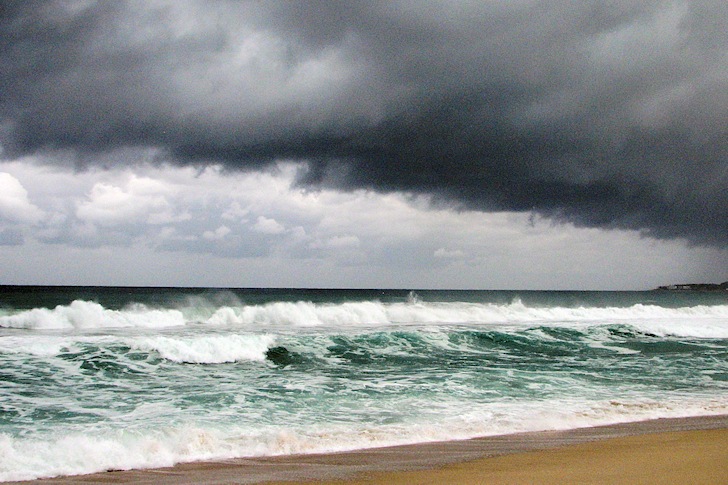Hurricane waves cause damage in coastal regions. Can the usual swell forecast apply to storm surges? Is it safe to go surfing during hurricane season?
The first hurricane wave models developed in the 1950s were based on significant wave height measurements and swell periods.
Later, during the 1990s, computer modeling enabled better ocean wind and wave prediction models with new and advanced calculations.
Recently, Chung-Sheng Wu, Arthur Taylor, Jye Chen, and Wilson Shaffer compiled a paper detailing the complexity of high winds near the center of hurricanes, where measurements are notoriously unreliable.
Indeed, scientists at the National Weather Service/NOAA have confirmed that in the six major hurricanes seen by the U.S. East Coast and the Gulf of Mexico, the parametric model giving wave height predictions returned errors within a 5 percent margin, compared with the measured buoy wave data.
Because field observations over the ocean are extremely infrequent during a hurricane, NOAA researchers instead installed a radar apparatus on aircraft P3, which measures the wave spectrum field during hurricane motion.
Inland Flooding
This led to the development of an empirical method of predicting dominant swell wave direction. This information can be used with coastal wave models for predicting and measuring coastal flooding.
It is concluded that inland flooding is the combined result of high storm surges elevating the water level over a mild beach slope, causing waves to break further inland and wash higher wave run-ups on the beach.
Without storm surge elevation, the wave set-up is limited, and wave run-up is mostly confined to the foreshore slope.
The paper by Wu, Taylor, Chen, and Shaffer concludes that more efficient hurricane wave forecasting is still in demand.
Thus, observations of waves at the coasts are required in order to monitor and verify models already in place.
If you've decided to hit the waves during the hurricane season, check the conditions at your local spot and any information from your national weather service.
Remember that things can be unpredictable, as this science is still in relative infancy.
Learn how waves are formed. Discover the differences between ground swells and wind swells.
Browse through the best surf forecasting books.


